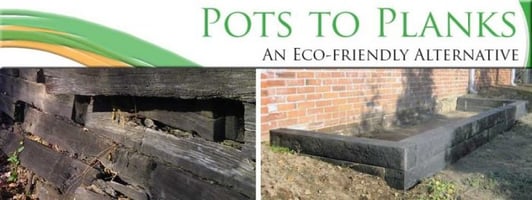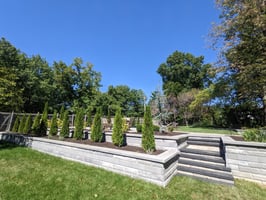Retaining walls are everywhere, if you’re looking for them. Homes, businesses and schools all use them along property lines, landscaping, and steep grades. So, do you need a retaining wall? And if so, what do you need to consider before building or hiring a hardscaping company to design and build it for you?
There are some things you’ll need to keep in mind as you make decisions on the functionality and overall style of a retaining wall.
What Does a Retaining Wall Do?
In the past, retaining walls were designed for function only, mainly to hold back soil along steep grades of land. Now landscape designers are working with home owners to use them to create beautiful – and functional – outdoor living spaces. Retaining walls are typically found in places that need extra support to prevent downhill erosion. Retaining walls can also be used to manage water runoff, which is especially effective when paired with a functional rain garden. Retaining walls provide usable land, to create terraces of level area in your yard. Retaining walls can also provide additional outdoor entertaining areas by providing extra outdoor seating.

Thing to Consider for a New Retaining Wall
When you begin planning a new retaining wall project, it’s important to take into consideration it’s overall function and appearance. If the new retaining wall is located in a highly visible area like your front entrance or business storefront, you may consider upgrading the type of material used or incorporate some captivating design elements. Alternatively, if the retaining wall is being built for functionality only then you can save on money by selecting more affordable building materials.
You’ll also need to consider the general size, scope and budget for the retaining wall project. Natural stone is more expensive than manufactured blocks. However, manufactured blocks such as Versa-lok, Belgard, and Anchor Wall Stone are available in many color options and textures. This can be great to match the architecture of newer homes and buildings, however these may not match the original architecture of some of St. Louis’ older historical homes in Ladue, Central West End or Clayton.
Retaining Wall Pros
 Some homeowners decide to build their own retaining wall, which is fine for smaller projects under 2 feet high. For higher retaining walls, it’s best to schedule a consultation with an experienced outdoor living expert in your area. Not all stones are suitable for larger retaining walls and certain considerations need to be kept in mind when designing a large retaining wall, such as foot or vehicle traffic above or use. The costs of building a retaining wall can add up quickly, so it’s important to think of them as an investment, a project that you don’t want to have to revisit later due to failure or improper building techniques. Ask if contractors have ICPI or NCMA training, or get references on similar past retaining wall projects completed.
Some homeowners decide to build their own retaining wall, which is fine for smaller projects under 2 feet high. For higher retaining walls, it’s best to schedule a consultation with an experienced outdoor living expert in your area. Not all stones are suitable for larger retaining walls and certain considerations need to be kept in mind when designing a large retaining wall, such as foot or vehicle traffic above or use. The costs of building a retaining wall can add up quickly, so it’s important to think of them as an investment, a project that you don’t want to have to revisit later due to failure or improper building techniques. Ask if contractors have ICPI or NCMA training, or get references on similar past retaining wall projects completed.
Looking for more info on retaining walls? Visit the Quiet Village page dedicated to retaining walls here. Or, you can always schedule a consultation with a landscape design team member. Oftentimes people think of large outdoor projects being completed in Spring and Summer. However, there are plenty of benefits in scheduling a fall or winter hardscaping project! By scheduling your project during the “off-season”, you’ll benefit by not having your yard a mess when you’d rather be enjoying it instead. Plus, we’re able to do less damage when flowers and plants aren’t in full bloom. Contact us about getting started on your retaining wall or patio project through winter, so it’s ready for Spring and Summer parties!



